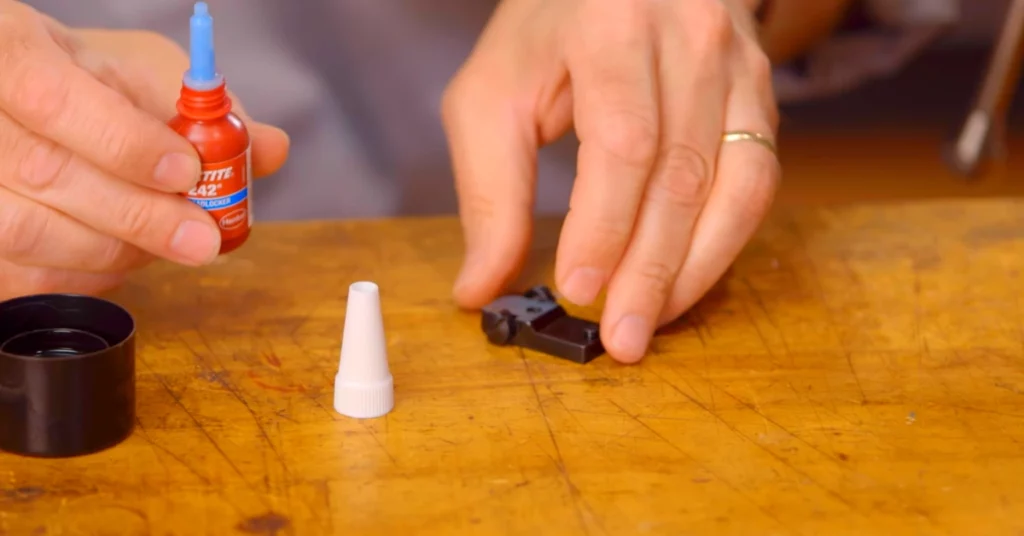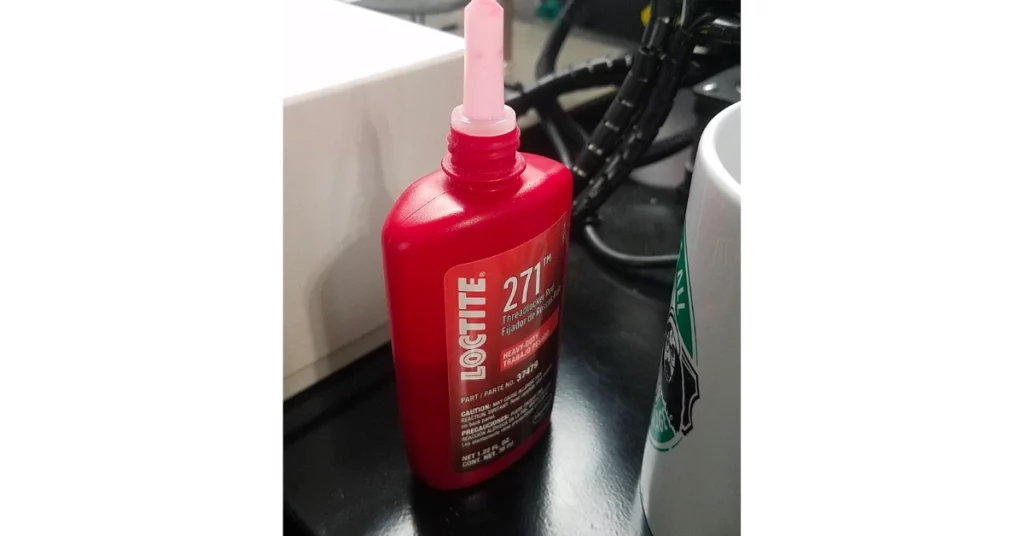A good threadlocker is necessary to protect your fasteners or screws from falling off in components where the fasteners go through constant motion and vibration. Loctite is one of the most well-known brands regarding adhesives, and they have a range of threadlockers available.
Loctite threadlockers are available in various strengths and for multiple sizes of fasteners. So, in the battle of Loctite 242 vs. 271, which one should you side with and why? I’ll review Loctite 242 and 271’s features and specifications and how they differ in this article, and you’ll be able to make an informed decision.
Read More: Loctite 242 vs. 262
Read More: Loctite 277 vs. 271
Loctite 242 vs. 271

About Loctite 242
Loctite 242 is a threadlocker for metal fasteners or screws made by Loctite-Henkel. The 242 is a Blue colored threadlocker from Loctite-Henkel. The color of the threadlocker you get when you purchase a Loctite threadlocker is significant since it indicates the strength of the threadlocker.
The 242 being Blue colored means it’s a medium-strength threadlocker, and you can use it for components you plan to disassemble. Loctite 242 works well with all metals and most active and passive substrates, including – brass, steel, and stainless steel.
Loctite 242 has medium viscosity and is thixotropic, which prevents fluid migration after applying the adhesive. Furthermore, once Loctite 242 is wholly cured, it provides enhanced protection against contamination of common industrial oils like – cutting, lubrication, anti-corrosion, and protection fluids.
Loctite 242, being medium-strength, means you can easily disassemble your components in the future if you need to use only hand tools like a wrench. However, don’t let the medium strength confuse you about the 242’s capability to lock and seal your fasteners perfectly.
Loctite 242 is available in a tube of 0.5 ml and bottles of – 10 ml, 50 ml, 250 ml, and 1 liter.
Read More: Loctite 242 vs. 243
Read More: Loctite 380 vs. 480
About Loctite 271
Loctite 271 is a high-strength threadlocker for metal screws or fasteners made by Locitite-Henkel. Loctite 271 is red-colored, which indicates that the 271 has high strength.
Loctite 271 is a high-strength threadlocker that forms a permanent seal once wholly cured. So, you typically use the 271 when you don’t plan to disassemble your components.
Loctite 271 has Low viscosity, so it cures faster compared to many alternatives and fluorescence under UV light, which allows you to monitor your components after application. The 271 works well with all metals and most active and passive substrates, including – brass, steel, and stainless steel.
Loctite 271 creates a permanent adhesion when it’s completely cured, and you can use it for components that go through constant vibration and motion, like – pumps or gearboxes. Additionally, the 271 is also tolerant to minor contamination from industrial fluids like – cutting, lubrication, anti-corrosion, and protection fluids.
Loctite 271 is available in a tube of 0.5 ml and bottles of – 10 ml, 50 ml, 250 ml, and 1 liter.

Differences Between Loctite 242 And 271
Now that you know what Loctite 242 and 271 are, let’s examine their differences like loctite blue and red.
Fixture and Cure Time
Loctite 242 and 271 have similar cure times; once you apply the threadlockers, a complete cure takes around 24 hours.
The 242 has a fixture time of 5 min, 15 min, and 20 min for steel, brass, and stainless steel, respectively.
On the other hand, the 271 has a fixture time of 10 min, 5 min, and 15 min for steel, brass, and stainless steel, respectively.
Strength and Removal
Loctite 242 is a blue, medium-strength threadlocker, and you can use it for components you plan to disassemble down the line. You’ll only need to use hand tools for the removal procedure.
On the other hand, the 271 is a red, high-strength threadlocker that offers permanent adhesion. You’ll need to use heat and, at times, chemical solvents to remove the 271.
Ideal size of Fasteners and Viscosity
Loctite 242 has medium viscosity, and you can use it for fasteners ranging from 6 mm to 19 mm.
Loctite 271 has low viscosity, and you can use it for fasteners up to 25 mm in size.
Read More: Loctite 222 vs. 243
Last Opinion
Loctite 242 and 271 are excellent threadlockers that fit their specific purposes well. So, in the battle of Loctite 242 vs. 271, which one should you pick?
You can use the 242 if you need a medium-strength threadlocker and plan to disassemble your component later. The 242 is also an excellent pick for you if your fasteners are up to 19 mm in size. On the other hand, go for the 271 if you need a high-strength threadlocker, and your fasteners are within the range of 25 mm in size.

